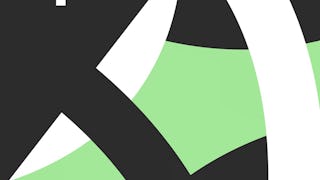In this course, you'll explore the advanced functionalities of Blender to create hyper-realistic vegetation, transforming your 3D scenes into vibrant, lifelike environments. You’ll begin by mastering the use of Blender's particle system to populate your models with detailed flowers and foliage, utilizing weight painting for precise placement. As the course progresses, you'll delve into the creation of various plant types, from delicate yellow flowers to lush purple and white floral arrangements, each step honing your skills in texturing and model refinement.

Enjoy unlimited growth with a year of Coursera Plus for $199 (regularly $399). Save now.

Advanced Blender Techniques for Realistic Vegetation
This course is part of Blender to Unreal Engine - 3D Plants and Vegetation Specialization

Instructor: Packt - Course Instructors
Included with
Recommended experience
What you'll learn
Understand and apply Blender techniques like particle systems, weight painting, and texturing to craft realistic 3D vegetation.
Analyze and evaluate modeling and texturing techniques for diverse plant types, ensuring optimized performance and top visual quality.
Recall key Blender functions and learn to effectively integrate them into complex 3D environments for realistic foliage creation.
Create lifelike vegetation that elevates digital scene realism, using advanced modeling and texturing techniques for detailed refinement.
Details to know

Add to your LinkedIn profile
5 assignments
See how employees at top companies are mastering in-demand skills

Build your subject-matter expertise
- Learn new concepts from industry experts
- Gain a foundational understanding of a subject or tool
- Develop job-relevant skills with hands-on projects
- Earn a shareable career certificate

There are 10 modules in this course
In this module, we will explore how to use Blender’s particle emitter to efficiently populate 3D models with foliage. You’ll learn how to manage particle systems and leverage weight painting to perfect the placement and realism of your flower petals.
What's included
2 videos2 readings
In this module, we will focus on perfecting our yellow flower foliage. We will fix mesh issues to improve texturing, add complementary elements like leaves, and finalize the roughness PBR textures to achieve a more realistic appearance.
What's included
2 videos
In this module, we will work on creating and detailing purple flower foliage. We’ll explore how to use modifiers for symmetrical petal arrangements, apply advanced texturing techniques, and add final touches to bring out the natural feel of the flowers.
What's included
4 videos1 assignment
In this module, we will create white flower foliage with a focus on efficiency and optimization. You’ll learn how to reuse textured meshes, adjust texture resolution for better performance, and use camera perspective to guide detailed texturing.
What's included
4 videos
In this module, we will delve into creating variations of white flowers. We’ll use sculpting tools to fine-tune plant shapes and apply proportional editing to develop visually appealing and natural-looking foliage.
What's included
2 videos
In this module, we will start modeling and texturing water-based foliage like reeds and grass. You’ll learn how to optimize UV mapping for long foliage and apply advanced unwrapping techniques to achieve high-quality textures.
What's included
2 videos1 assignment
In this module, we will focus on the texturing process for water reeds. You’ll master texture painting and bump mapping techniques to bring out the intricate details of your water foliage models.
What's included
2 videos
In this module, we will create and refine multiple reed plant variations. We’ll work on their mesh foundations using the bisect tool and ensure each reed is textured and placed realistically within water-based scenes.
What's included
2 videos1 assignment
In this module, we will model and texture lily pads, focusing on the unique structure and appearance of these water plants. You’ll learn how to sculpt the pads, design stems with Bezier curves, and texture the models to blend seamlessly into aquatic environments.
What's included
4 videos
In this module, we will explore the creation of underwater plants. You’ll learn to model and texture these smaller, intricate elements and arrange them in clusters that enhance the depth and realism of your underwater environments.
What's included
3 videos1 reading2 assignments
Earn a career certificate
Add this credential to your LinkedIn profile, resume, or CV. Share it on social media and in your performance review.
Instructor

Offered by
Explore more from Design and Product
 Status: Free Trial
Status: Free Trial Status: Free Trial
Status: Free Trial Status: Free Trial
Status: Free Trial Status: Free Trial
Status: Free Trial
Why people choose Coursera for their career




Frequently asked questions
Yes, you can preview the first video and view the syllabus before you enroll. You must purchase the course to access content not included in the preview.
If you decide to enroll in the course before the session start date, you will have access to all of the lecture videos and readings for the course. You’ll be able to submit assignments once the session starts.
Once you enroll and your session begins, you will have access to all videos and other resources, including reading items and the course discussion forum. You’ll be able to view and submit practice assessments, and complete required graded assignments to earn a grade and a Course Certificate.
More questions
Financial aid available,





